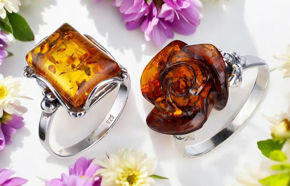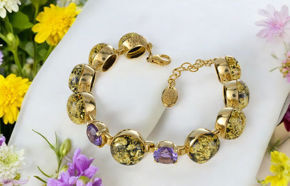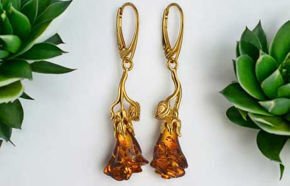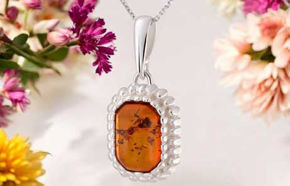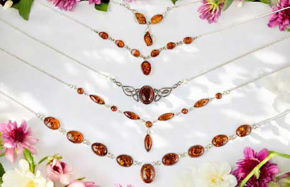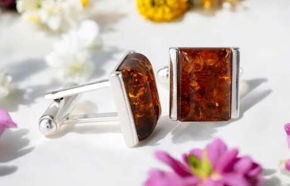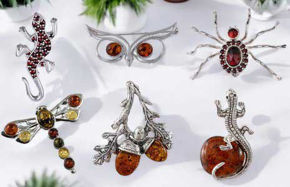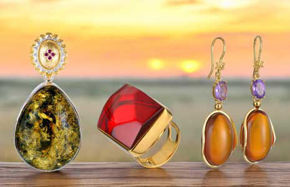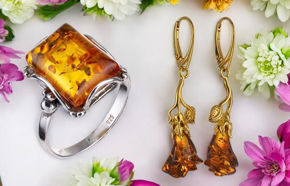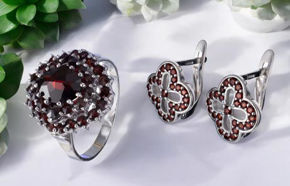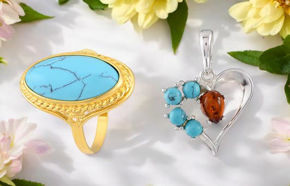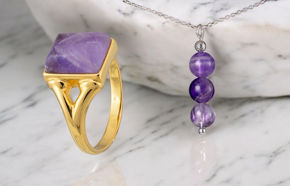Amber, the fossilized resin of ancient trees, has fascinated humans for thousands of years. With its warm glow and rich history, it’s no wonder that amber is highly prized in jewelry and collectibles. But as with anything valuable, there are always imitations. This guide will help you understand the intricacies of identifying real amber from fakes, which is crucial for both personal collection and the business of selling amber jewelry.
Introduction to Amber
Brief History and Significance
Amber’s allure stretches back to prehistoric times. The variety of colors found in amber, ranging from warm yellows to rich oranges, and even rare greens or blues, adds to its unique charm. Ancient cultures used it for ornamental and medicinal purposes, and it has been found in archaeological sites across the globe. Its significance is not just historical; many believe amber possesses healing properties, making it a sought-after item even today.
Why Identifying Real Amber Is Important
Given amber's beauty and cultural significance, it's easy to see why counterfeit amber exists. Whether for personal collection or investment, knowing how to distinguish real amber from fakes ensures you get what you pay for. Authentic amber can have significant value, both financially and sentimentally, and understanding how to identify it can save you from costly mistakes.
Identifying Real Amber
Visual and Physical Tests for Authenticity
When identifying amber, start with a visual inspection. Real amber often contains inclusions—tiny bubbles, plant material, or even small insects—that add to its uniqueness. Fake amber, usually made from plastic or glass, tends to look too perfect. Additionally, real amber feels warm to the touch due to its organic origin. When rubbed, it can produce a mild resinous scent, while imitations will not.
Another simple test is the float test. Dissolve 7-8 tablespoons of salt in a glass of water and drop your amber piece in. Real amber will float, while most fakes will sink. However, be cautious, as some plastic imitations can also float; this test should be one of several you use.
Common Imitations and How to Spot Them
The most common amber imitations are glass, plastic, and synthetic resins. Glass is heavier and colder to the touch compared to amber and will sink in the float test. Plastic imitations may look visually similar but won’t have the same warm feel or scent when rubbed. Synthetic resins, like copal, are often passed off as amber. However, copal is considered to be a younger form of resin that hasn’t fully fossilized and is softer, making it easier to scratch.
Tools You Can Use for Testing
Various tools can help you identify real amber. UV light is particularly useful; under UV light, genuine amber fluoresces a blue or green hue. Additionally, a hot needle test can be performed with caution—when a hot needle is pressed against amber, it will release a pine-like scent, whereas plastic will emit a chemical smell and copal will melt.
The Science Behind Amber
Formation and Geological Origin
Amber forms from resin exuded by ancient trees that hardened over millions of years. This resin then fossilized through a natural polymerization process. The best gem quality amber is sourced primarily from the Kaliningrad area and the Baltic Sea. Most of the world’s amber comes from the Baltic Sea region, specifically from areas like Russia and Poland. The geological conditions in these areas were perfect for preserving the resin, leading to the formation of high-quality amber. Genuine Baltic amber is known for its unique beauty and historical significance, having formed over millions of years and often containing prehistoric inclusions.
Properties That Make It Unique
Amber's unique properties include its lightweight feel and warmth to the touch. Chemically, it's composed of a mix of organic compounds, primarily carbon, hydrogen, and oxygen. These compounds give amber its resilience and distinct appearance, setting it apart from other gemstones.
How These Properties Aid in Identification
Understanding amber's properties can significantly aid in identification. For example, its organic composition makes it less dense than most minerals, which is why it floats in saltwater. Additionally, the presence of succinic acid—a compound found in higher concentrations in Baltic amber—can be tested if you have access to specialized equipment.
Practical Uses of Amber
Traditional and Modern Applications
Historically, amber was used in various cultural rituals and as a medicine. Today, its uses are more diverse. Pair a bold amber necklace with a simple black dress for a striking, cohesive look. It’s a popular material for jewelry, decorative pieces, and even in alternative medicine practices, where it’s believed to have analgesic and anti-inflammatory properties. High-quality 925 sterling silver is often used in crafting amber jewelry, combining natural beauty with meticulous craftsmanship.
The Value of Genuine Amber
The value of genuine amber can be substantial, especially if it contains inclusions or is of high clarity and color. Amber jewelry comes in a variety of styles, such as rings, necklaces, and bracelets, making it versatile for everyday fashion and seasonal outfits. Factors like age, origin, and craftsmanship also play a role in determining its worth. Baltic amber, originating from Russia and the Baltic republics, is renowned around the world for its quality and historical significance, contributing to its widespread appeal. Collectors and investors often seek out pieces with historical significance or unique inclusions, making genuine amber a prized possession.
Conclusion and Next Steps
Summary of Key Points
Identifying real amber requires a combination of visual inspection, physical tests, and sometimes specialized tools. Understanding its formation, unique properties, and common imitations helps in making informed decisions. Genuine amber is not only beautiful but also holds significant historical and monetary value.
Encouragement to Share and Engage
We hope this guide has been informative and helpful. Share it with fellow amber enthusiasts and engage with our community to learn more about this fascinating material.
Information on Where to Find Genuine Baltic Amber Products
Looking to add genuine amber pieces to your collection? Visit reputable dealers and specialists who provide certification of authenticity. Online platforms and auctions can also be good sources, but always ensure you’re buying from trusted sellers.

